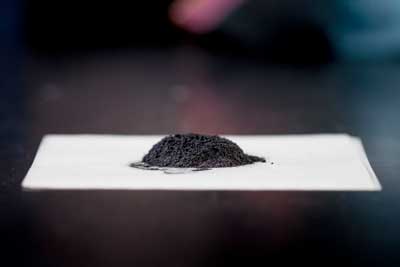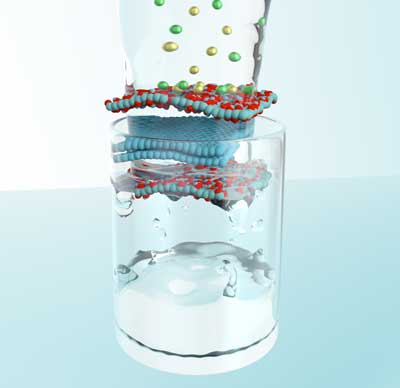Nanotechnology and the Environment
Nanotechnology has the potential to play a significant role in environmental protection and sustainability by enabling new and improved methods for monitoring, cleaning up, and mitigating environmental pollutants. It can also help to reduce resource consumption and energy use through the development of more efficient technologies.
For example, nanoparticles can be used to clean up oil spills, remediate contaminated soil and groundwater, and capture and remove air pollutants. Nanotechnology can also be used to create more efficient and effective methods for solar energy capture and storage, as well as for producing biofuels from renewable resources. Additionally, nanotechnology-enabled products, such as stronger and lighter materials, can reduce energy consumption in transportation and manufacturing.
However, it is important to consider the potential environmental and health impacts of nanotechnology, and to implement measures to minimize these risks. This includes ensuring that nanotechnology is developed and used in a responsible and sustainable manner, and that it is subject to proper regulation and oversight.
Overall, nanotechnology has the potential to make a positive impact on the environment and sustainability, but it is essential to approach its development and application with caution and a commitment to responsible use.
Note, however, that nanotechnology currently plays a rather subordinate role in environmental protection, whether it be in research or in practical applications. Environmental engineering companies themselves attach only limited importance to nanotechnology in their respective fields.
Potential environmental benefits
Rising prices for raw materials and energy, coupled with the increasing environmental awareness of consumers, are responsible for a flood of products on the market that promise certain advantages for environmental and climate protection. Nanomaterials exhibit special physical and chemical properties that make them interesting for novel, environmentally friendly products.
Examples include the increased durability of materials against mechanical stress or weathering, helping to increase the useful life of a product; nanotechnology-based dirt- and water-resistant coatings to reduce cleaning efforts; novel insulation materials to improve the energy efficiency of buildings; adding nanoparticles to a material to reduce weight and save energy during transport.
In the chemical industry sector, nanomaterials are applied based on their special catalytic properties in order to boost energy and resource efficiency, and nanomaterials can replace environmentally problematic chemicals in certain fields of application.
High hopes are being placed in nanotechnologically optimized products and processes for energy production and storage; these are currently in the development phase and are slated to contribute significantly to climate protection and solving our energy problems in the future (read more: "Nanotechnology in Energy").
In most commercially available nano-consumer products, environmental protection is not the primary goal. Neither textiles with nanosilver to combat perspiration odor, nor especially stable golf clubs with carbon nanotubes, help protect the environment. Manufacturers often promise such advantages, typically without providing the relevant evidence. Examples include self-cleaning surface coatings or textiles with spot protection, with are advertized as reducing the cleaning effort and therefore saving energy, water and cleaning agents.
Emphasis is often placed on the sustainable potential of where nanotechnology will take us. Nonetheless, this usually reflects unsubstantiated expectations. Determining the actual effects of a product on the environment – both positive and negative – requires examining the entire life cycle from production of the raw material to disposal at the end of the life cycle.
As a rule, the descriptions of environmental benefits fail to consider the amount of resources and energy consumed in producing the products (read more: "Nanotechnology and the environment – Potential benefits and sustainability effects").
Specific examples of nanotechnology applications that benefit the environment
Nanotechnology could make battery recycling economically attractive
Many batteries still contain heavy metals such as mercury, lead, cadmium, and nickel, which can contaminate the environment and pose a potential threat to human health when batteries are improperly disposed of. Not only do the billions upon billions of batteries in landfills pose an environmental problem, they also are a complete waste of a potential and cheap raw material.

Researchers have managed to recover pure zinc oxide nanoparticles from spent Zn-MnO2 batteries alkaline batteries.
Nanomaterials for radioactive waste clean-up in water
Scientists are working on nanotechnology solution for radioactive waste cleanup, specifically the use of titanate nanofibers as absorbents for the removal of radioactive ions from water. Researchers have also reported that the unique structural properties of titanate nanotubes and nanofibers make them superior materials for removal of radioactive cesium and iodine ions in water.
Nanotechnology-based solutions for oil spills
Conventional clean-up techniques are not adequate to solve the problem of massive oil spills. In recent years, nanotechnology has emerged as a potential source of novel solutions to many of the world's outstanding problems. Although the application of nanotechnology for oil spill cleanup is still in its nascent stage, it offers great promise for the future. In the last couple of years, there has been particularly growing interest worldwide in exploring ways of finding suitable solutions to clean up oil spills through use of nanomaterials.
Water applications
The potential impact areas for nanotechnology in water applications are divided into three categories treatment and remediation, sensing and detection, and pollution prevention (read more: "Nanotechnology and water treatment") and the improvement of desalination technologies is one key area thereof.
Nanotechnology-based water purification devices have the potential to transform the field of desalination, for instance by using the ion concentration polarization phenomenon (see: "Nanotechnology makes portable seawater desalination device possible").

Another, relatively new method of purifying brackish water is capacitive deionization (CDI) technology. The advantages of CDI are that it has no secondary pollution, is cost-effective and energy efficient. Nanotechnology researchers have developed a CDI application that uses graphene-like nanoflakes as electrodes for capacitive deionization. They found that the graphene electrodes resulted in a better CDI performance than the conventionally used activated carbon materials.
Carbon dioxide capture
Before CO2 can be stored in Carbon dioxide Capture and Storage (CCS) schemes, it must be separated from the other waste gases resulting from combustion or industrial processes. Most current methods used for this type of filtration are expensive and require the use of chemicals. Nanotechnology techniques to fabricate nanoscale thin membranes could lead to new membrane technology that could change that.
Hydrogen production from sunlight – artificial photosynthesis
Companies developing hydrogen-powered technologies like to wrap themselves in the green glow of environmentally friendly technology that will save the planet. While hydrogen fuel indeed is a clean energy carrier, the source of that hydrogen often is as dirty as it gets. The problem is that you can't dig a well to tap hydrogen, but hydrogen has to be produced, and that can be done using a variety of resources.
The dirtiest method – at least until highly efficient carbon capture and sequestration technologies are developed – is the gasification of coal (read more: "Nanotechnology could clean up the hydrogen car's dirty little secret"). The cleanest by far would be renewable energy electrolysis: using renewable energy technologies such as wind, solar, geo- and hydrothermal power to split water into hydrogen and oxygen.
Artificial photosynthesis, using solar energy to split water generating hydrogen and oxygen, can offer a clean and portable source of energy supply as durable as the sunlight. It takes about 2.5 volts to break a single water molecule down into oxygen along with negatively charged electrons and positively charged protons. It is the extraction and separation of these oppositely charged electrons and protons from water molecules that provides the electric power.
Working on the nanoscale, researchers have shown that an inexpensive and environmentally benign inorganic light harvesting nanocrystal array can be combined with a low-cost electrocatalyst that contains abundant elements to fabricate an inexpensive and stable system for photoelectrochemical hydrogen production.
For more and up-to-date articles, check out our extensive Nanowerk Spotlight selection on green nanotechnology and environmental issues.
